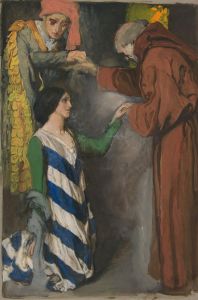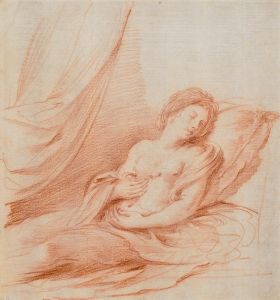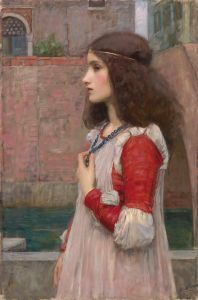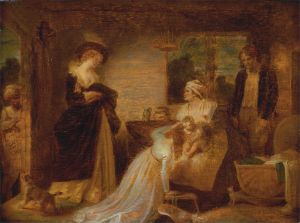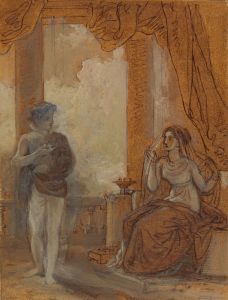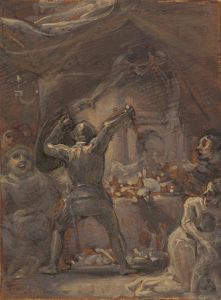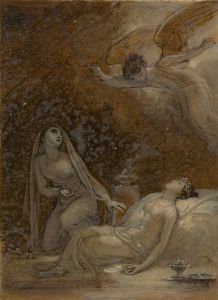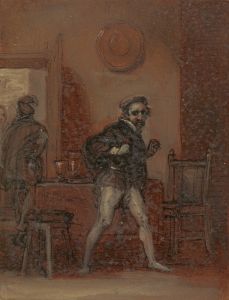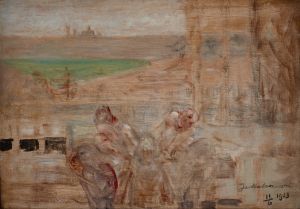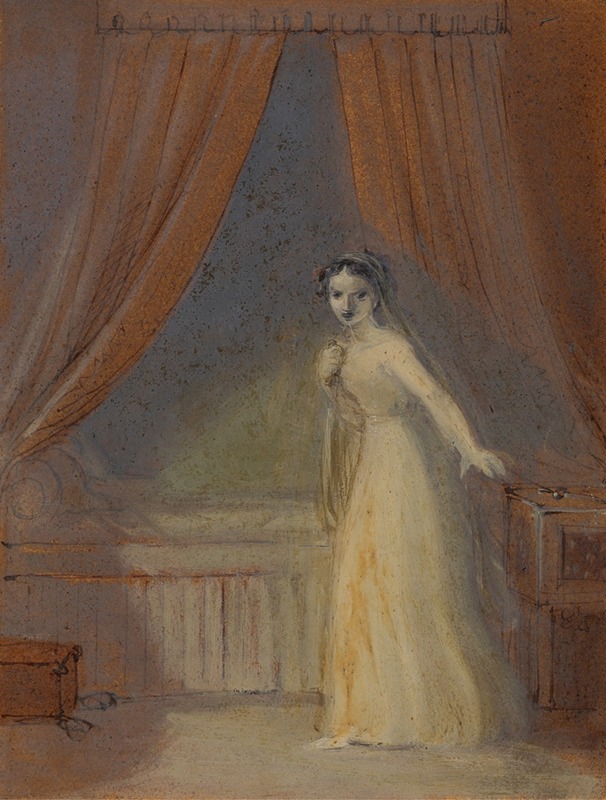
Juliet About to Take her Sleeping Draught
A hand-painted replica of Robert Smirke’s masterpiece Juliet About to Take her Sleeping Draught, meticulously crafted by professional artists to capture the true essence of the original. Each piece is created with museum-quality canvas and rare mineral pigments, carefully painted by experienced artists with delicate brushstrokes and rich, layered colors to perfectly recreate the texture of the original artwork. Unlike machine-printed reproductions, this hand-painted version brings the painting to life, infused with the artist’s emotions and skill in every stroke. Whether for personal collection or home decoration, it instantly elevates the artistic atmosphere of any space.
Robert Smirke's painting Juliet About to Take her Sleeping Draught is an artwork inspired by William Shakespeare's tragedy Romeo and Juliet. Created in the late 18th or early 19th century, the painting depicts a pivotal moment from Act IV, Scene III of the play, where Juliet prepares to drink a potion that will induce a death-like sleep. This act is part of her desperate plan to reunite with her lover, Romeo, and escape the constraints of her family's expectations.
Robert Smirke (1753–1845) was a British painter and illustrator known for his works based on literary themes, particularly those of Shakespeare. He was a member of the Royal Academy and contributed significantly to the visual interpretation of literary classics during his time. Smirke's artistic style often combined neoclassical elements with a focus on narrative clarity, making his works accessible and engaging to viewers.
In Juliet About to Take her Sleeping Draught, Smirke captures the emotional tension of the scene. Juliet is portrayed in a private, intimate moment, holding the vial of potion as she contemplates the risks and consequences of her decision. The composition emphasizes her solitude and inner turmoil, reflecting the dramatic weight of the scene. The setting is typically depicted as her chamber, with careful attention to period details in the furnishings and costumes, aligning with the historical and theatrical context of the play.
The painting is an example of Smirke's ability to translate Shakespearean drama into visual form, focusing on the psychological depth of the characters. His work contributed to the broader 18th- and 19th-century tradition of Shakespearean art, which sought to bring the Bard's plays to life through painting, engraving, and other mediums. Smirke's interpretation of Juliet aligns with the Romantic era's fascination with themes of love, tragedy, and individual emotion.
The current location of the painting is not widely documented, and it is unclear whether it resides in a public collection, private ownership, or has been lost to history. However, Smirke's works, including his Shakespearean subjects, remain significant for their role in popularizing and visualizing literary masterpieces during his era.
This painting, like many of Smirke's works, reflects the cultural and artistic trends of his time, where literature and visual art were closely intertwined. It serves as a testament to the enduring influence of Shakespeare's plays on the visual arts and the creative interpretations they have inspired across centuries.






